Native
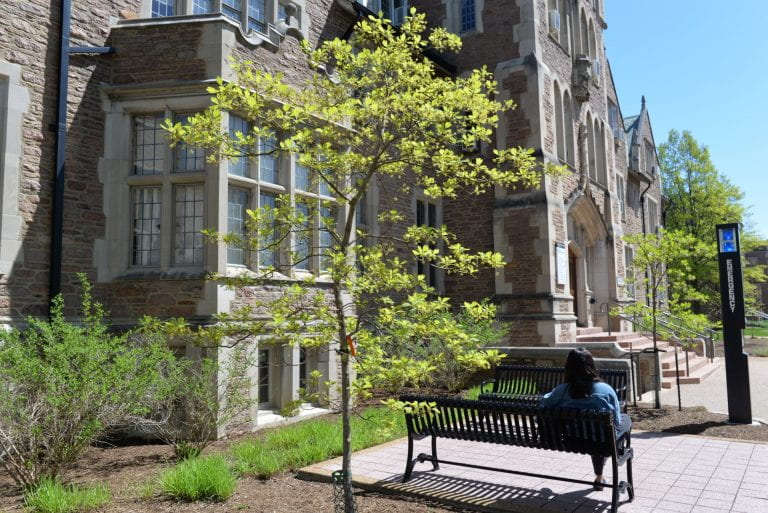
Sassafras
Arbor Walk #30, TreeKeeper ID #1516
This Missouri native tree is capable of producing clones from its sprawling root system, allowing it to create genetically identical colonies. It has leaves that emit a spicy fragrance when crushed.
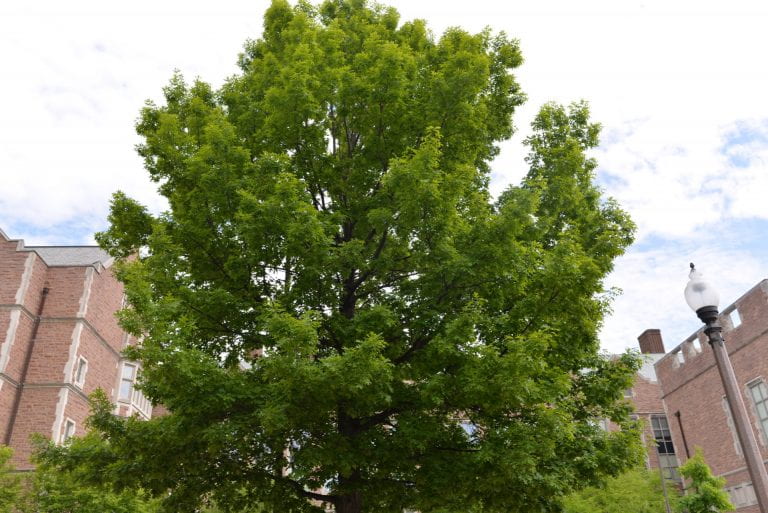
Scarlet Oak
Arbor walk #49, TreeKeeper ID #1925
Often used as a shade tree in lawns and along streets because it grows to a large size. It is native to southeastern Missouri.

Shellbark Hickory
Arbor Walk #114, TreeKeeper ID #4255
The Shellbark Hickory is a member of Juglandaceae (Walnut family) that actually produces larger edible nuts than its sister species, the Pecan.
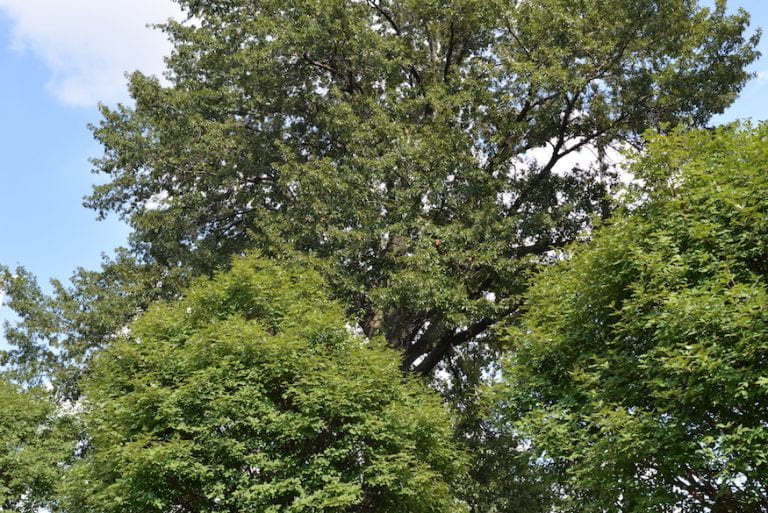
Shingle Oak
Arbor Walk #85, TreeKeeper ID #2263
This atypical oak lacks the normal lobed leaf structure seen in other oak species. Its common name derives from the fact that early settlers in the Midwest often used wood from the tree to shingle their roofs.
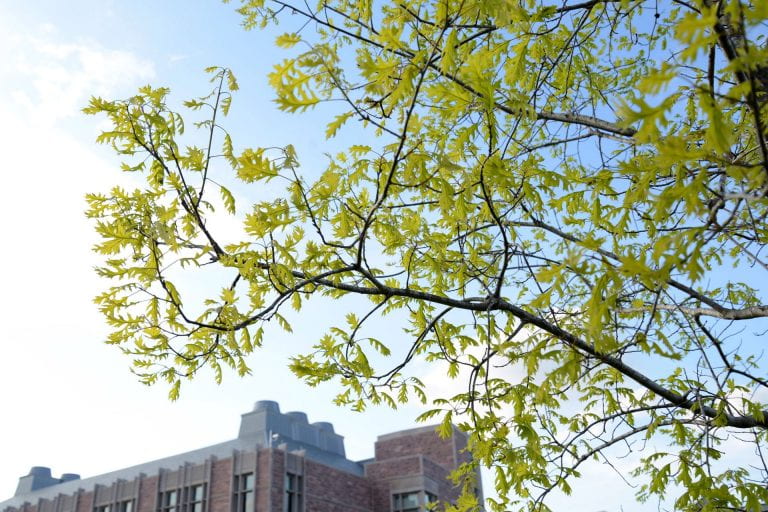
Shumard Oak
Arbor Walk #103, TreeKeeper ID #5795
Also known as the Swamp Red Oak, this large oak species is native to much of the Southeastern U.S. and the Ohio River Valley. The Shumard Oak is planted in urban areas for its tolerance in water availability and air pollution, as well as its preference for alkaline soils.

Smooth Sumac
Arbor Walk #157, TreeKeeper ID #6419
Smooth Sumac is one of the most widespread of all of the sumac species (genus: Rhus). Similar to certain members of the genus, Smooth Sumac berries have been used by some as a tart flavor akin to lemon that can be used to create tea or lemonade.
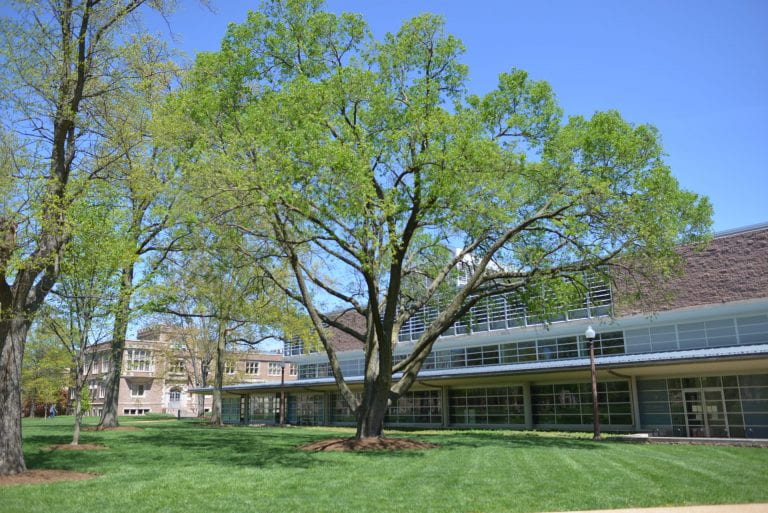
Sugarberry
Arbor Walk #29, Treekeeper ID #1658
This lovely mature tree has shaded the west side of Olin Library for generations of students but sadly came down in a storm in July 2023. The Sugarberry is known for its distinctive corky bark and edible berries.

Sugarberry
Arbor Walk #154, TreeKeeper ID #1620
This tree was grown from a seedling descended from the previous Missouri state champion Sugarberry that lived in Kirkwood Park.
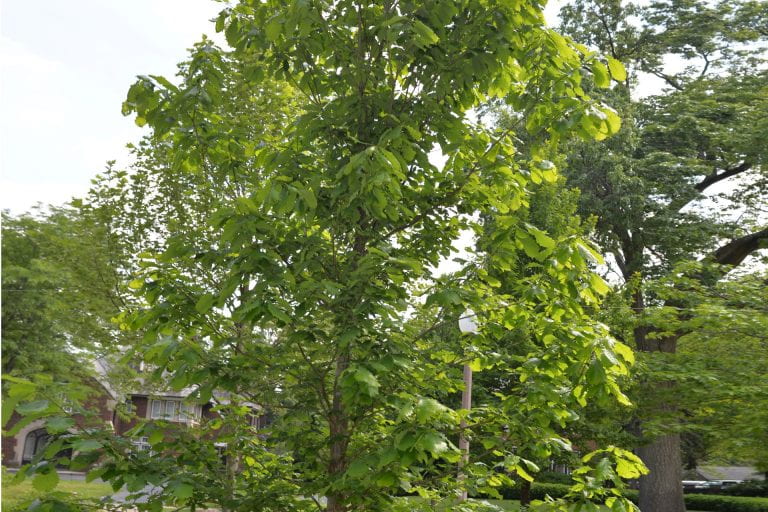
Swamp Chestnut Oak
Arbor walk #55, Treekeeper ID #7212
This shade tree is a Missouri native to floodplains. It produces acorns that, unlike most, can be eaten straight from the tree without needing to be boiled.
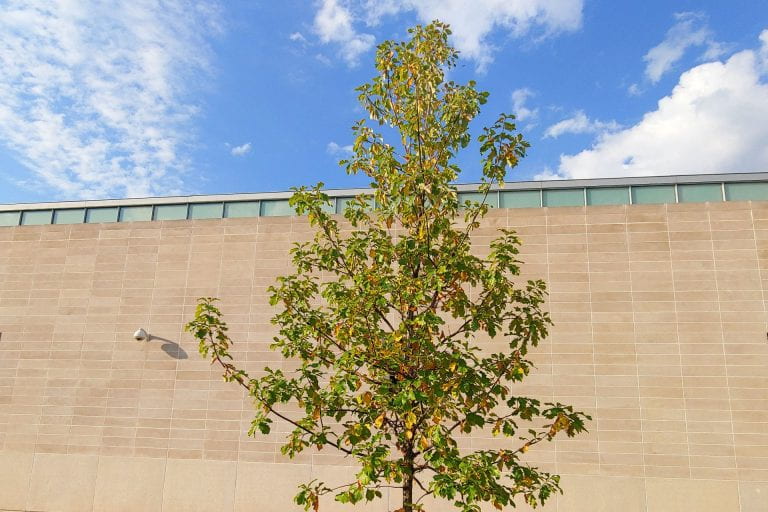
Swamp White Oak
Arbor Walk #105, Treekeeper ID #6088
Like its Latin name suggests, this native oak is recognizable for its dark green leaf and silvery-white underside. It is a deciduous tree with broad and rounded crown, which is good for shading.
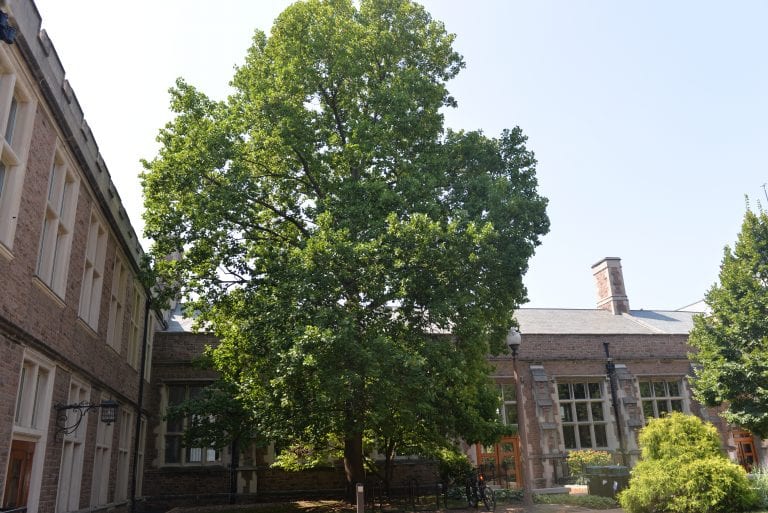
Tulip Poplar
Arbor Walk #13, Treekeeper ID #1888
This native tree’s common name comes from its flower that is shaped like a tulip. In 1991, WashU was given this tree as a seedling. It was grown from seed taken from the original Tulip Trees planted by George Washington in 1785 at his Mount Vernon home.
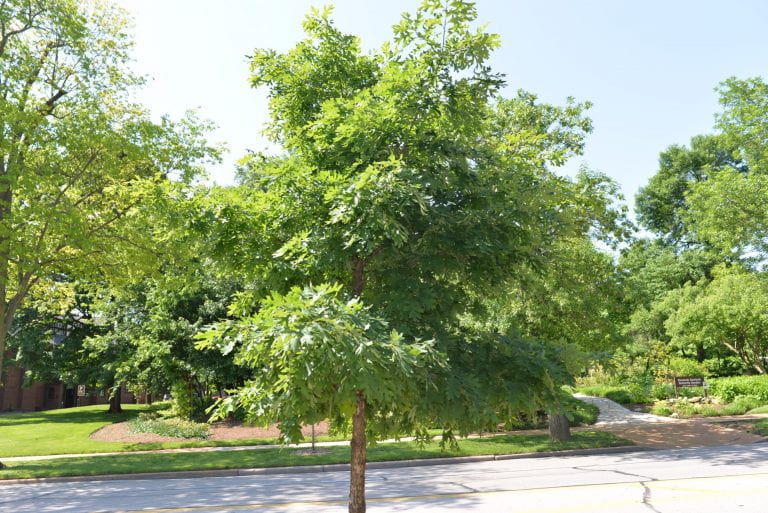
White Oak
Arbor Walk #43, Treekeeper ID #2690
The White Oak is one of the most ubiquitous trees in all of the eastern United States. The White Oak is the state tree of Illinois, Connecticut, and Maryland, and numerous trees along the East Coast have stood in towns or cities since before European occupation.
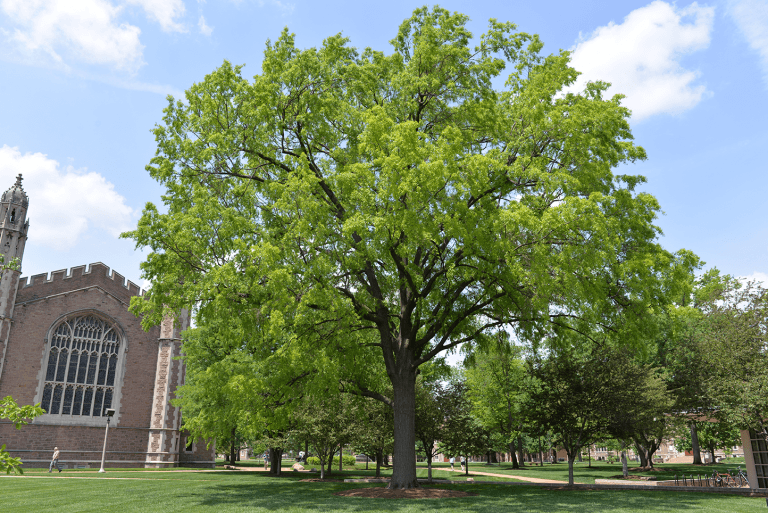
Willow Oak
Arbor Walk #22, Treekeeper ID #1513
This large native tree has a simple, small leaf, and a finer texture than most oak trees. It is considered a medium to large oak, can grow over 100 feet tall, and is native to the Southeastern portion of the United States, including Missouri.
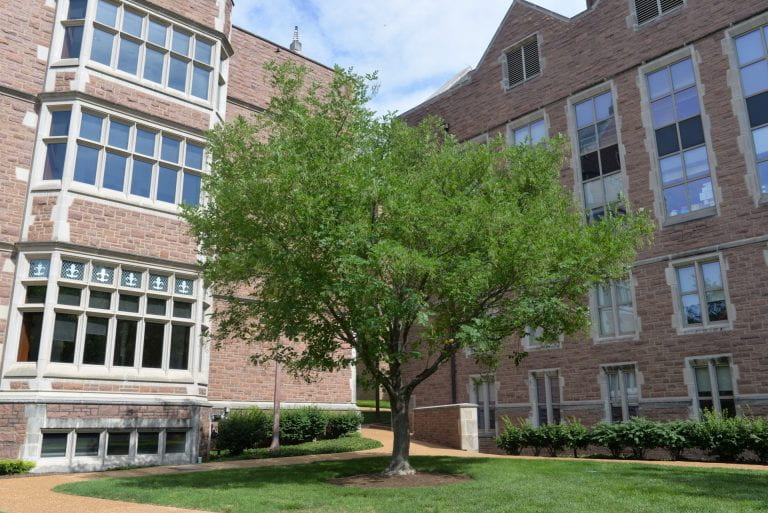
Yellowwood
Arbor Walk #21, Treekeeper ID #1882
This medium sized shade tree has panicles of sweet smelling flowers in early summer and brilliant yellow leaves in the fall.